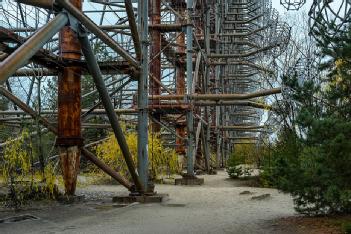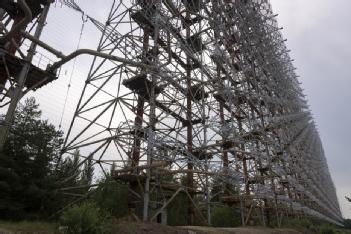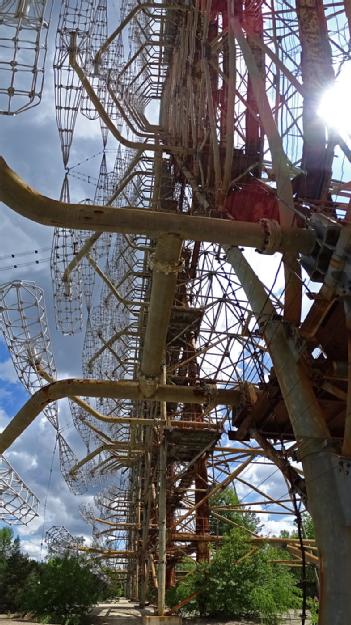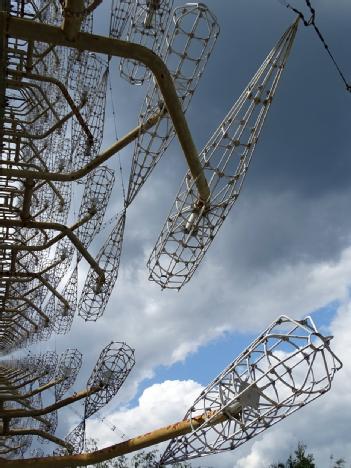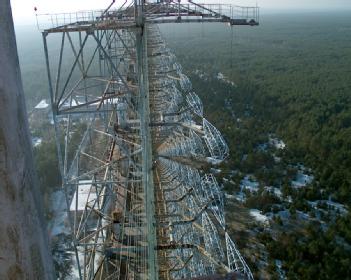
Radiolokatsiyna Stantsiya "Duha" (Russian Woodpecker) - Радіолокаційна станція "Дуга" |
8348+56 Tschernobyl, Ukraine (Kyiv) |
|
| Address |
|
| Floor area | only roughly guessed: 7 000 m² / 75 347 ft² |
|
Opening times
|
The site is open for pre-arranged visits, for which a permit must be obtained in advance. Operators who provide tours of Chernobyl and the surrounding areas are able to obtain the relevant paperwork. |
|
Status from 02/2022
|
Temporary closed |
| Contact | Unknown contact data for this museum - please help via contact form. |
| Homepage | We could not find a homepage. |
| Location / Directions |
Duga-1 was built in northern Ukraine between Liubech and Chernobyl-2. The receiver is located at 51°18′19.06″N 30°03′57.35″E a few kilometers west-north-west of Chernobyl; The transmitter is located at 51°38′15.98″N 30°42′10.41″E about 50 kilometres northeast of Chernobyl (just west of Chernihiv, south of Gomel). |
| Description | Duga radar From Wikipedia, the free encyclopedia: The Duga systems were extremely powerful, over 10 MW in some cases, and broadcast in the shortwave radio bands. They appeared without warning, sounding like a sharp, repetitive tapping noise at 10 Hz repetition rate, which led to it being nicknamed by shortwave listeners the Russian Woodpecker. The random frequency hops disrupted legitimate broadcasts, amateur radio operations, oceanic commercial aviation communications, and utility transmissions, resulting in thousands of complaints by many countries worldwide. These signals even made interference on 27 MHz CB radios in the late 60's and early 70's sometimes completely blocking even local communications in Portugal for example, leading to the supposition of several Megawatts of RF power transmission. The signal became such a nuisance that some receivers used on amateur radio and television, began including 'Woodpecker Blankers' in their circuit designs, such as the Datong Model SRB2 Auto Woodpecker Blanker, in an effort to filter out the interference. The unclaimed signal was a source for much speculation, giving rise to theories such as Soviet mind control and weather control experiments. However, because of its distinctive transmission pattern, many experts and amateur radio hobbyists quickly realized it to be an over-the-horizon radar system. NATO military intelligence had already given it the reporting name STEEL WORK or STEEL YARD likely based on the massive size of the transmitter which spanned 700 metres in length and 150 metres in height. While the amateur radio community was well aware of the system, this theory was not publicly confirmed until after the fall of the Soviet Union. |
[dsp_museum_detail.cfm]
| Data Compliance | More Information |



